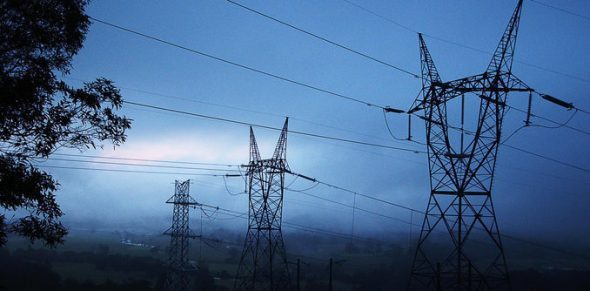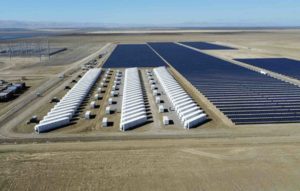Energy industry experts have thrown their weight behind a campaign to oppose the federal government’s National Energy Guarantee, describing it as a “woeful” outcome, both for Australia’s renewables sector, and for its emissions reduction and climate effort.
Speaking at the webcast of an “industry crisis meeting” hosted by the Smart Energy Council on Monday, former Clean Energy Finance Corporation CEO Oliver Yates, and Carbon and Energy Markets’ Bruce Mountain explained why the policy, even in its current pared-back form, was worse than useless.
The comments, made in support of an SEC-led campaign to oppose the NEG, follow last week’s COAG energy ministers meeting, which saw the controversial policy waved through to a final set of negotiations in August.
Yates, who is now the executive director at UPC Renewables, has been vocal in his opposition to the NEG, and said on Monday that the policy did nothing to encourage additional renewable investment – quite the opposite, in fact.
“It actually effectively legislates protection of the fossil fuel industry, and is actually quite damaging to (renewables),” he said.
“When the compliance price of electricity is zero, it actually means that there is no disincentive at all for coal-fired production, and therefore there’s no incentive to close those old coal-fired power stations.
“Therefore, they’ll continue to continue, and they’ll continue to pollute with impunity, stopping the much needed energy transition.”
Yates said that setting emissions compliance cost on a path to zero could “pull the carpet out” from under existing solar and wind energy investments and actually stop future investments.
“This is very bad for our industry and very bad for the nation as a whole, as this orderly investment and orderly transition towards using new generation assets is required.”
And – “as a banker” – Yates also warned against the mentality that the NEG could be legislated now, and tweaked later, under a future Labor government, or a more enlightened Coalition.
“It is impossible to invest on the assumption of election results,” he said.
“You cannot explain to your board, when you’re asking them to put money into a transaction, that the structural price of power could bounce around wildly, depending upon the outcomes of various state or federal election campaigns.”
“The only way that we can get certainty… is if the federal emissions level set within the NEG is around 50 per cent for the electricity sector.
“I can ensure you that no investor ever anticipated that the electricity sector would only reduce its emissions between 26-28 per cent by 2030.
“That outcome, that little level of emissions reduction will be a shock to the financial markets, and actually it’s a shock to many of us who are concerned, deeply, about climate change.
“It says, actually, that the government would rather protect fossil fuel generators from the impact of meeting our national emissions targets, where it is economically cheaper, and they’d rather make other sectors of the economy pay.
“This isn’t a campaign to just throw the NEG out, like what happened to the CPRS,” Yates continued, referring to the defeat of the Labor Rudd government’s 2009 emissions tracing scheme, in the face of opposition from the Greens.
“Because if the government … had meaningful emissions targets, the amendments that have already been made by the Energy Security Board have improved the system.
“But if the government is not prepared to change the emission reduction target from 26 per cent, then that is woeful, and it locks that inaction in place, and it locks our industry out of place – and that is not acceptable.”
Mountain, who has also been critical of the NEG in the past, said neither the low electricity sector emissions target, nor the allowance for the purchase of “outside” offsets to meet these targets “made any sense” to him.
“I don’t think they’ve clarified any of the difficulties in their previous version (of the NEG),” Mountain said.
“But they have made it less likely that the scheme will be invoked, anyway.”
Mountain said the standout concerns about the NEG were its potential to skew the market further in favour of large and incumbent energy market players; and the complete absence of an easily tradable emissions reduction instrument.
“The underlying policy intent that’s driven us to this (point),” Mountain said, “is that it can be said by the government that they’re not pricing emissions.
“I think it will asymmetrically work to the benefit of the buyers – the retailers – rather than sellers.
“I think the buyers, and most particularly the very large vertically integrated firms will have an advantage relative to the smaller (retailers).”
And Mountain said the NEG would also favour existing renewables – and particularly large hydro resources, most of which are government owned – over new wind and solar, no matter how cheaply, or effectively they could deliver emissions abatement.
“I also think there’s concerns of windfall gains in respect of existing zero emission power generation, and to me the principle issue here is it’s hydro…
“Wind and solar …was invested under a RET policy which was intended to be ongoing … If this scheme takes the place of the RET by 2021, arguably it’s an undermining of that scheme.
“Existing hydro, which was ring-fenced and had a transition arrangement… (it) would have a windfall gain because their generation, being zero emissions, would have just as much value in terms of (the NEG) as existing and new wind and solar, which is no additional emissions reduction,” he said.
“I think (the NEG) creates asymmetric benefit to the retailers, rather than to wind and solar customers – existing and future. And in that sense, although it has a potential to reduce emissions, it will do so more expensively than the alternate policies that have been adopted here and elsewhere.”









